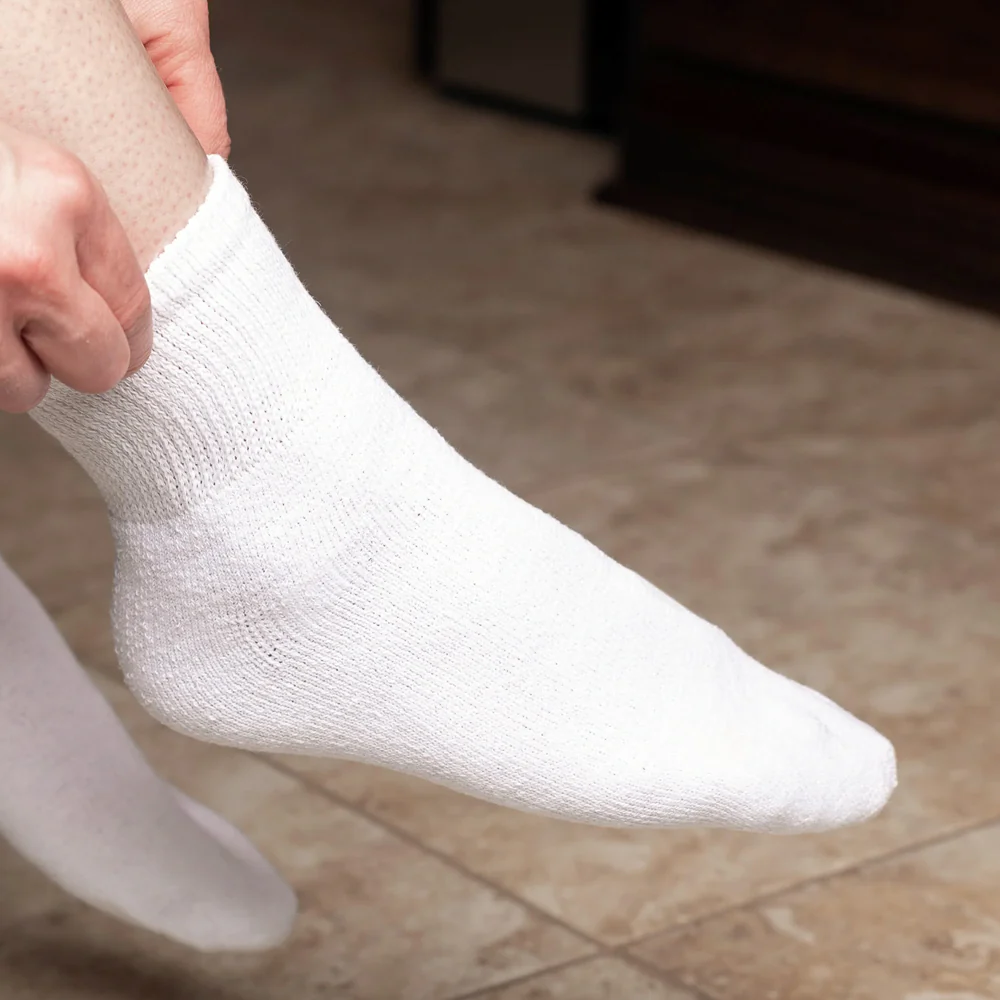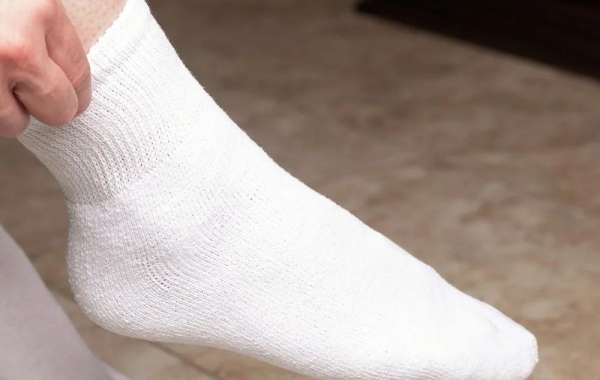Diabetic ankle socks are specially designed to address the unique needs of individuals with diabetes, aiming to provide comfort, support, and protection for their feet. For those managing diabetes, proper foot care is crucial, as the condition can lead to various foot-related issues. This article explores what diabetic ankle socks are, their benefits, and how they contribute to better foot health for people with diabetes.

1. Understanding Diabetic Ankle Socks
Diabetic ankle socks are designed with features that cater specifically to the needs of individuals with diabetes. These socks prioritize comfort, protection, and health, making them a vital part of foot care for diabetics.
1.1 Key Features
Seamless Design: Diabetic ankle socks often have a seamless design to prevent irritation and reduce the risk of developing blisters or sores. Seams can create pressure points that may lead to discomfort or skin breakdown, so a seamless construction minimizes these risks.
Non-Binding Tops: The tops of diabetic socks are usually non-binding, meaning they are designed to gently conform to the leg without restricting circulation. This feature helps prevent swelling and ensures that the socks do not constrict blood flow, which is particularly important for individuals with diabetic neuropathy or poor circulation.
Moisture-Wicking Materials: Many diabetic ankle socks are made from moisture-wicking materials that help keep feet dry by drawing sweat away from the skin. This helps reduce the risk of fungal infections and other skin issues that can arise from excessive moisture.
Cushioned Soles: Extra cushioning in the soles provides added comfort and protection. This is beneficial for individuals who may have sensitive feet or are prone to foot ulcers, as it helps absorb impact and reduce pressure on the feet.
Antibacterial Properties: Some diabetic socks include antibacterial treatments to help prevent infections. This is especially important for individuals with diabetes, as they are more susceptible to infections and skin issues.
2. Benefits of Diabetic Ankle Socks
Diabetic ankle socks offer several benefits that contribute to overall foot health and comfort for individuals with diabetes.
2.1 Improved Circulation
Diabetic ankle socks are designed to enhance blood flow by avoiding tight elastic bands or constrictive designs. Improved circulation is crucial for preventing complications such as diabetic foot ulcers and peripheral neuropathy. Non-binding tops ensure that blood flow is not restricted, helping to maintain healthy circulation.
2.2 Reduced Risk of Skin Issues
The seamless construction and moisture-wicking properties of diabetic socks help to minimize skin irritation and prevent the development of blisters and sores. Keeping the feet dry and free from friction is essential for avoiding infections and other skin-related problems that can arise from diabetes.
2.3 Enhanced Comfort
With features like cushioned soles and soft, non-irritating materials, diabetic ankle socks provide superior comfort. This is especially important for individuals with sensitive feet or those who spend long periods on their feet. The cushioning helps to absorb shock and reduce pressure on areas prone to discomfort.
2.4 Infection Prevention
The antibacterial properties of some diabetic socks help to reduce the risk of infections. Maintaining good foot hygiene and using socks that inhibit bacterial growth can prevent complications such as athlete’s foot or fungal infections, which are more common in people with diabetes.
2.5 Support for Swelling
Individuals with diabetes may experience foot and ankle swelling due to poor circulation or other complications. Diabetic ankle socks with a non-binding top can accommodate swelling without constricting the area, providing comfort and preventing further complications.
3. How to Choose the Right Diabetic Ankle Socks
Selecting the right diabetic ankle socks involves considering various factors to ensure they meet your specific needs. Here’s what to look for:
3.1 Material
Opt for socks made from breathable, moisture-wicking materials such as cotton blends, bamboo, or synthetic fabrics designed for moisture control. These materials help keep feet dry and comfortable.
3.2 Fit and Size
Choose socks that fit well without being too tight. Proper fit is essential to avoid pressure points and ensure that the socks stay in place. Most diabetic socks come in various sizes, so refer to size charts to find the right fit.
3.3 Design and Features
Look for features such as seamless toes, cushioned soles, and non-binding tops. These elements contribute to comfort and help address specific foot care needs. Consider socks with additional features like antimicrobial treatments if you are prone to infections.
3.4 Style and Preference
While functionality is crucial, style and personal preference also matter. Diabetic ankle socks come in various colors and designs, so select options that align with your style while still offering the necessary features.
3.5 Brand and Quality
Invest in high-quality diabetic socks from reputable brands. Quality socks ensure durability and effectiveness in addressing foot health needs. Reading reviews and seeking recommendations can help you find reliable options.
4. Conclusion
Diabetic ankle socks play a vital role in managing foot health for individuals with diabetes. By focusing on comfort, protection, and circulation, these socks help prevent complications and improve overall foot care. With features such as seamless designs, non-binding tops, and moisture-wicking materials, diabetic ankle socks are an essential component of diabetes management. When choosing the right pair, consider factors like material, fit, design, and quality to ensure that the socks meet your specific needs and contribute to a healthier, more comfortable lifestyle.



